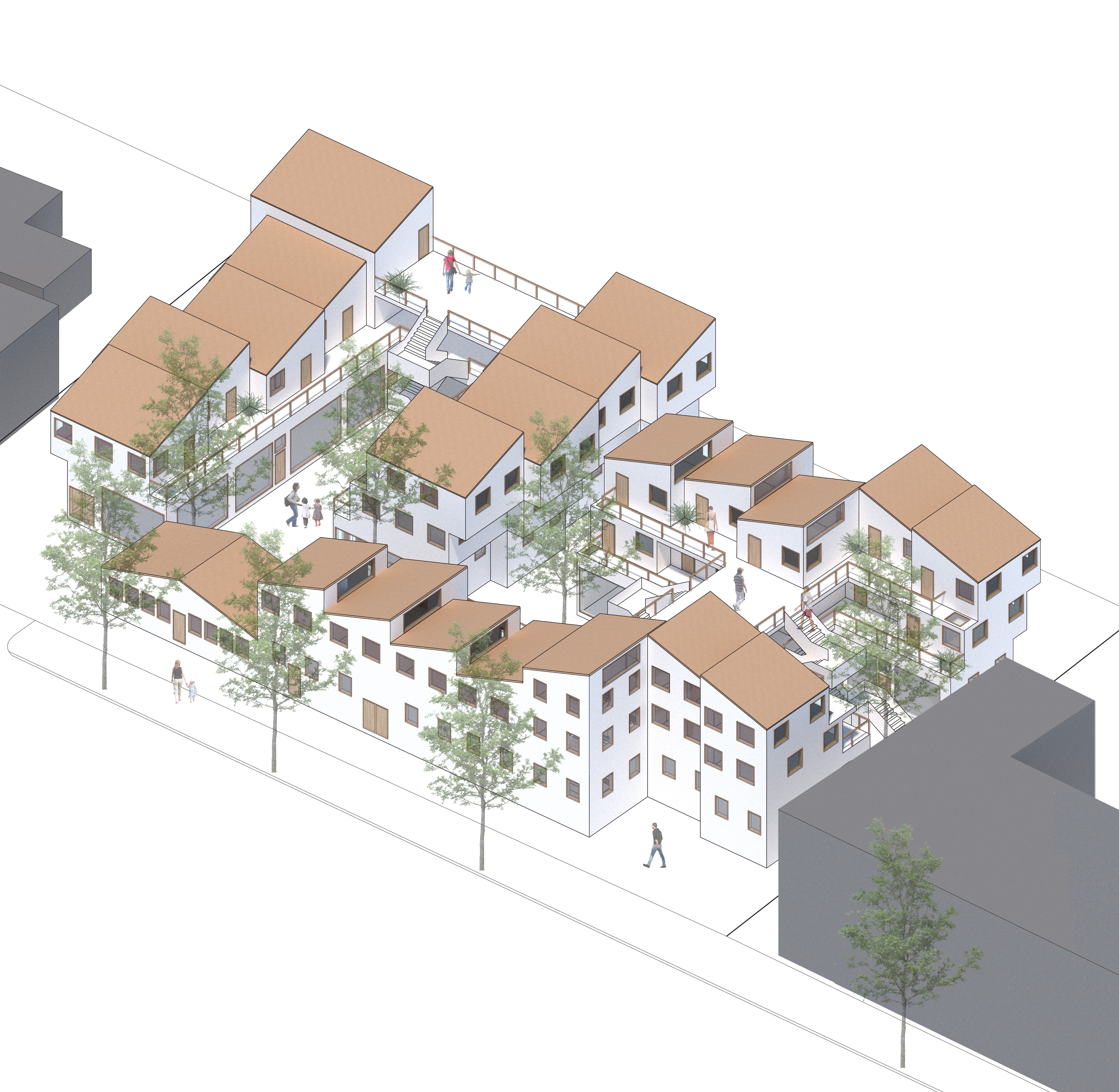


This proposal for a Domestic Violence shelter utilizes the courtyard as a tool to provide gathering spaces for small group conversations as well as areas appropriate for personal introspection. The relationships between positive and negative spaces inform this condition by attributing equal importance to solid and void. These safe outdoor spaces are divided yet connected in order to provide a sense of ownership and privacy to the unique client types.


Due to the issue of security in dwellings such as this, camouflaging was key in the design. Elements of offsetting and window placement aided in the integration of this building with its surrounding context. The offsets additionally allow for additional courtyard conditions at the unit entrances where residents are free to customize the space, adding to the sense of ownership.



The study of the unit was key in the development of the Domestic Violence shelter as it questioned degrees of privacy as well as individual needs of varying types of clients since this shelter was to accomodate a range of victims including families, single women, single men, and single gender nonconforming
Family units, which accommodate three people, have the need for larger living and dining areas as well as kitchen space and bathroom layouts where toilets and showers are separated. Units for single women and units for single men have been attributed to one person each as the issue of privacy was important to residents. In order to further privacy, dining, and living room space has been included within the unit instead of in larger communal kitchens.
In addition to individual space, window specifications were also an important consideration as it impacts the health and healing process of residents. Window size and shape, for example, to be considered since the more rectangular windows could give airs of institutions, something that was undesirable for this project.


Organization of communal space, including a main-entry, dining room, common rooms, staff offices, therapy rooms, conference rooms, and storage in relation to living units was guided by input of staff and victims, who constantly specified a need for privacy. This resulted in a division of spaces by floor. The first floor housed all the communal spaces while the second and third floors were reserved for the units, which required a physical separation from the rest of the spaces.









